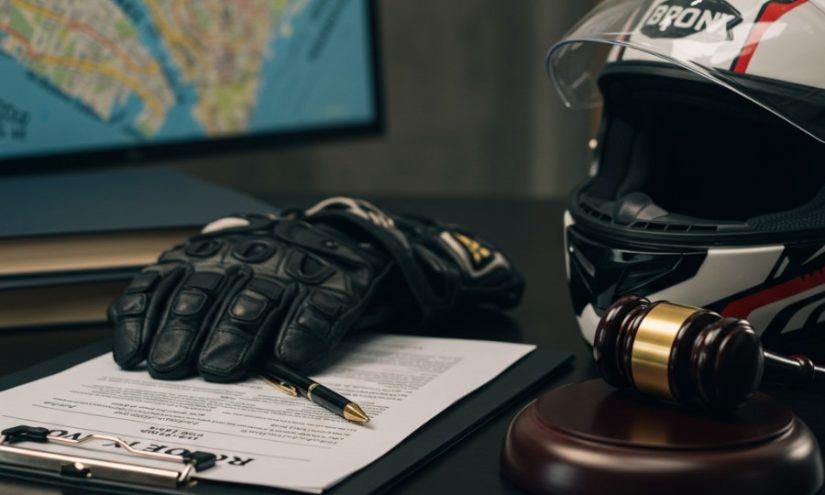
Motorcycling offers an unparalleled sense of freedom and excitement, especially when navigating the vibrant streets of the Bronx and throughout New York State. However, this exhilarating pursuit also carries significant risks. Riders inherently face greater vulnerability to severe injuries in collisions compared to occupants of enclosed vehicles. Consequently, understanding the specific laws governing motorcycle accidents is not just advisable; indeed, it is absolutely paramount for every rider. These critical laws are not static; rather, they frequently evolve, demanding vigilance and informed awareness from everyone involved. Staying abreast of these changes specifically empowers riders to protect their rights and interests more effectively after an unfortunate incident.
Navigating New York’s Evolving Motorcycle Accident Laws
The legal landscape surrounding motorcycle accidents in New York State has undergone notable changes in recent years. These updates impact how accidents are reported, how fault is determined, and crucially, how injured riders can seek compensation. Specifically, new police reporting requirements now encompass a broader range of two-wheeled vehicles. Furthermore, the application of comparative negligence principles continues to shape accident claims. Perhaps most significantly, the long-standing exclusion of motorcycles from New York’s no-fault insurance benefits profoundly affects recovery options for injured riders. Understanding these key areas is essential for anyone on two wheels.
New Police Reporting Requirements: A Broader Scope for Two-Wheeled Vehicles
Recent legislative updates have expanded police reporting requirements for motor vehicle accidents across New York. Previously, reporting thresholds mainly focused on incidents involving larger vehicles or those resulting in significant property damage. Now, however, the scope of required police documentation has broadened considerably. Specifically, these new regulations mandate official police reports for accidents involving a wider array of two-wheeled vehicles. This includes not only traditional motorcycles but also mopeds and even e-bikes.
This broader inclusion means that a larger number of incidents will now necessitate official police documentation. Police reports are undeniably crucial documents in any accident claim. They provide an impartial, initial assessment of the incident, often recorded by trained professionals. Furthermore, these reports frequently include vital details such as vehicle damage, approximate location, initial witness statements, and the officer’s preliminary determination of contributing factors. For instance, an officer’s notes regarding road conditions, traffic violations, or even the positions of vehicles can significantly influence the trajectory and ultimate outcome of a personal injury claim. Consequently, accurate and thorough reporting by law enforcement becomes even more critical under these new rules. When an accident occurs, you must ensure the police are called to the scene to create this official record. Their report provides a foundational piece of evidence for your case, often serving as the bedrock for any subsequent legal action.
Comparative Negligence: Understanding Your Share of Fault in New York
New York operates under a “pure comparative negligence” system regarding personal injury claims. This legal principle allows an injured party to recover damages even if they bear some degree of responsibility for the accident. However, the amount of your recoverable damages is directly reduced by your determined percentage of fault. For example, if a jury determines you were 20% at fault for a motorcycle accident and your total damages (including medical bills, lost wages, and pain and suffering) amount to $100,000, you would then receive $80,000. This system differs significantly from “contributory negligence” states, where any fault on your part, even 1%, could completely bar you from recovering any compensation.
Motorcycle accidents frequently involve complex determinations of fault. Often, other drivers involved in collisions with motorcycles claim they “didn’t see” the rider, leading to contentious disputes over liability. Therefore, proving the other party’s negligence is absolutely essential, even if you contributed in some small way to the incident. An experienced personal injury attorney understands precisely how to gather compelling evidence to establish fault. This evidence might include witness testimony, expert accident reconstruction reports, traffic camera footage, or even black box data from vehicles. Ultimately, maximizing your financial recovery under New York’s comparative negligence system demands a meticulous and strategic investigation. Your legal team works diligently to minimize your assigned percentage of fault, thus maximizing your rightful compensation.
The Exclusion of Motorcycles from No-Fault Insurance Benefits: A Critical Distinction
One of the most significant and often misunderstood distinctions for motorcyclists in New York concerns no-fault insurance. Unlike drivers and passengers in cars, motorcycles are explicitly excluded from New York’s no-fault insurance system. This exclusion carries profound implications for injured riders and dictates the entire approach to their injury claims.
Specifically, New York’s no-fault law, formally known as the Comprehensive Motor Vehicle Insurance Reparations Act, typically ensures that medical expenses and lost wages are covered by your own insurance company, regardless of who caused the accident. This system was designed to streamline the recovery process for most vehicle occupants, reducing the need for lengthy lawsuits for basic economic damages. However, motorcycles fall entirely outside this framework. Consequently, an injured motorcyclist cannot typically claim no-fault benefits for their medical bills, prescription costs, or lost income from either their own insurance or the at-fault driver’s policy. This is a crucial difference that many riders only discover after an accident.
This exclusion means that if you are injured in a motorcycle accident, you must pursue your medical expenses, lost wages, and other damages through a traditional personal injury lawsuit directly against the at-fault driver. This process can be significantly more challenging and time-consuming than a no-fault claim. Moreover, it places a much greater burden on the injured rider to definitively prove the other party’s negligence. Therefore, securing skilled legal representation becomes even more vital for motorcyclists. They specifically need an advocate who can navigate the complexities of fault-based claims effectively, building a strong case to secure the compensation you deserve.
What These Legal Changes Mean for Bronx Motorcyclists: Protecting Your Future
The evolving legal landscape directly impacts every motorcyclist residing in or riding through the Bronx. Firstly, the expanded police reporting requirements fundamentally underline the critical importance of ensuring every accident is officially documented. This official record serves as indisputable, crucial evidence in any subsequent legal action. Secondly, the pure comparative negligence system highlights the urgent need for a thorough and expert investigation into fault, even if you believe you bear some minor responsibility. Your immediate actions after an accident, and the quality of the evidence gathered, can significantly affect your ability to recover fair compensation.
Furthermore, understanding the no-fault exclusion is perhaps the most critical takeaway for riders. It entirely dictates the approach to your injury claim. Since you cannot rely on no-fault benefits to cover immediate medical bills or lost wages, you must be prepared to prove liability and seek compensation directly from the responsible party. This often involves filing a comprehensive personal injury lawsuit. Consequently, early consultation with a knowledgeable personal injury attorney specializing in motorcycle accidents becomes absolutely indispensable. Their expertise will guide you through this intricate process.
A seasoned attorney can comprehensively explain your rights, outline your available options, and chart a clear path forward. They can also meticulously guide you through the intricate legal process, ensuring you meet all critical deadlines and gather every piece of necessary documentation. Moreover, they will skillfully negotiate with tenacious insurance companies, who often try to minimize payouts or deny claims outright. Ultimately, their expertise helps protect your financial future and ensures you receive the compensation necessary for your recovery, allowing you to focus on healing without the added burden of legal complexities.
Crucial Steps to Take After a Motorcycle Accident
If you tragically experience a motorcycle accident, your immediate actions are critically important. First and foremost, prioritize your personal safety and seek immediate medical attention without delay, even if your injuries seem minor at the scene. Some serious injuries, such as internal bleeding or concussions, may not manifest symptoms immediately. Second, always call the police to the scene; this ensures an official report is generated, which is now even more important given the expanded reporting requirements for all two-wheeled vehicles. Third, if physically possible and safe to do so, gather evidence at the scene. This includes taking numerous photos of the accident scene, vehicle damage, road conditions, and any visible injuries. Also, collect contact information from any witnesses and details of the other vehicle and driver, including their insurance information.
It is vital to avoid admitting fault at the scene, regardless of initial perceptions. Any statements you make can potentially be used against you later in court or by insurance companies. Instead, focus on providing factual information to the police and exchanging necessary insurance details. Finally, contact a personal injury attorney as soon as you are physically able. Their early involvement can significantly strengthen your case, protect your legal interests, and alleviate much of the stress associated with navigating the aftermath of an accident. They can begin investigating immediately, preserving crucial evidence.
Conclusion: Protecting Your Rights on New York Roads
New York’s motorcycle accident laws are undeniably complex and, moreover, continually changing. These recent and upcoming changes, particularly concerning police reporting, the application of comparative negligence, and the critical exclusion from no-fault insurance, directly affect your rights and your ability to recover after a collision. Understanding these legal nuances is not just advisable; indeed, it is absolutely essential for every rider in the Bronx and beyond. Personal Injury Bronx remains steadfastly committed to guiding you through these challenges. We provide compassionate, authoritative, and vigorous legal representation, ensuring your voice is heard and your rights are meticulously defended. If you or a loved one has suffered injuries in a motorcycle accident, we strongly urge you to seek professional legal advice promptly. Your journey to recovery truly deserves unwavering, supportive, and expert legal advocacy.
Free Consultation
We want to hear about your case! Fill in the form to speak to a Bronx personal injury attorney now!
Follow us for legal tips and case results:
This article was drafted with AI assistance. Please verify all claims and information for accuracy. The content is for informational purposes only and does not constitute professional advice.


